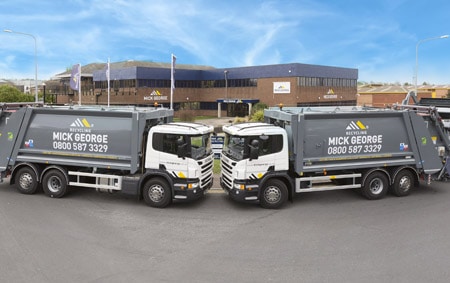To a certain extent this already occurs in aircraft, agriculture and construction transportation but is it a feasible option in Waste Management. Can artificial intelligence systems really have a role to play or is this science fiction gone mad.
The reality would appear that we’re closer than some may think. The switch to Electric vehicles was one thing, but tests are now being carried out by major vehicle manufacturers to assess the suitability of autonomous refuse vehicles in delivering the functionality associated with such a service.
So how does this work in reality? Refuse collection is traditionally a repetitive process whereby scheduled routes are clearly distinguished, which fortunately lends itself to the concept of automation. In the first instance the vehicle is driven manually along a designated route, while on board sensors systematically map out the directions using GPS.

Three areas
Attention at this early juncture appears to be focused on three main regions, predominantly centred on traffic safety, improved working conditions and lower environmental impact. In simplistic terms, these desirables are achieved as follows:
Traffic safety: Sensors are fitted to each corner of the cab to detect any nearby movements and obstacles, immediately bringing the vehicle to a halt should anything appear in the vicinity. In addition, the ‘crew member’ has access to a separate console to execute an ‘override’ function if necessary, all geared towards pedestrian safety. Despite various modern prevention techniques currently being utilised – reversing radar warning systems, multi-camera CCTV systems and ‘banksman’, injuries and even fatalities continue to occur.
Improved working conditions: The autonomous technology means that the RCV manoeuvres through traffic, follows the walking driver from house to house, without the need for him/her to get in and out of the cab between each lift. This is envisaged to substantially reduce occupational injuries such as wear in knee joints, which research suggests is a common ailment among employees in the industry.
Environmental impact: The efficiencies that the automated technology will allow with respect to speeding up collections is unquestionable, and as with live-routing capability, both with certainly help the environment.
Incidentally, there are no references made to potential cost savings in human labour through employing said technologies. That is principally due to the trials being focussed on highway travel, rather than towns or cities, which subsequently means that human intervention is clearly not entirely redundant within this process, although some efficiencies are evidently visible.
As of yet there has been no attention paid towards the logistics surrounding the transfer of waste from containers to the vehicle itself without human interaction, but one would suspect that once the formalities of the vehicles role are more established, then the human element could be next on the agenda to address.
Joe Gossage, Logistics and Compliance Director at Mick George Ltd commented: “Driving an HGV in a residential environment, through narrow streets lined with vulnerable road users even at the limited speed which these vehicles usually travel, naturally brings about severe safety implications. When you consider the possibility of no human interaction at all, you can understand why the testing process is likely to be a rigorous one. The shift from human drivers to robots will be a slow and gradual process but one we need to analyse if it could impact on our business in the future.’’








Subscribe for free